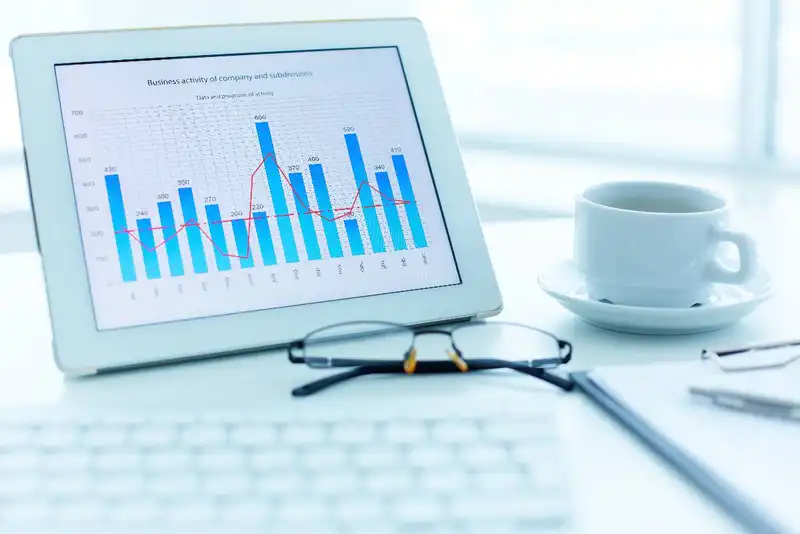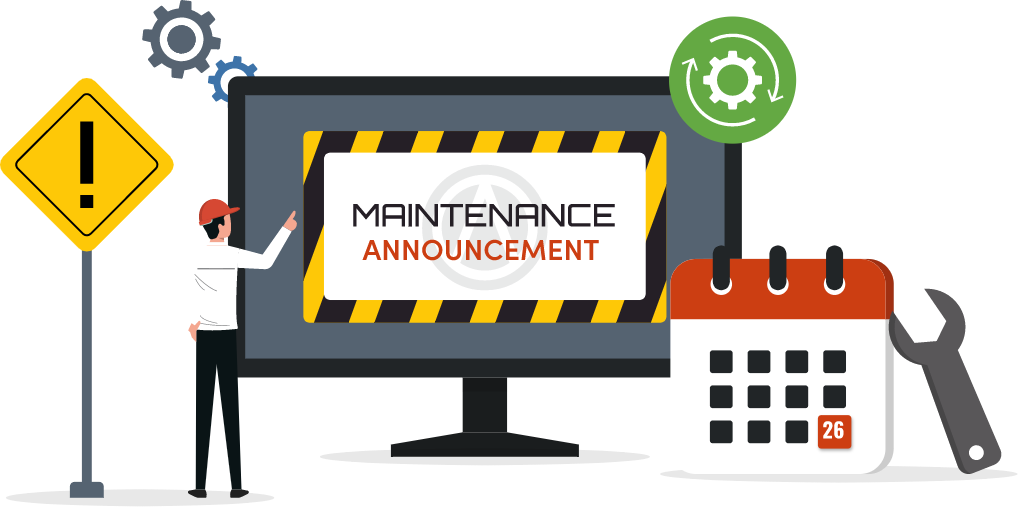What is sales forecasting in a restaurant?
Sales forecasting is the process of predicting future restaurant sales using data, trends, and external factors. It helps owners plan staffing, purchasing, and budgeting to avoid waste and meet demand efficiently.
The Different Methods of Sales Forecasting for Restaurants
Importance of Accurate Forecasts
Running a restaurant comes with daily uncertainty - some days the dining room is packed, other days it's quiet. Sales forecasting helps bring order to that unpredictability. By predicting how much business you'll do in the days or weeks ahead, you can plan smarter - schedule the right number of staff, buy the right amount of ingredients, and prepare for rush periods without wasting food or labor hours.
Accurate forecasting isn't just for large chains - it's essential for every owner who wants to manage costs and protect profit margins. With reliable forecasts, you can reduce overstaffing, prevent shortages, and better manage cash flow. The goal isn't to guess the future perfectly but to make informed decisions based on patterns and data you already have.
Understanding Sales Forecasting in Simple Terms

Sales forecasting may sound technical, but it's really about one thing - predicting what's coming next so you can plan today. In a restaurant, that means using your past sales data and real-world factors to estimate how many customers will walk through your doors, how much they'll spend, and when demand will rise or fall. Whether you run a single cafe or manage multiple locations, this simple prediction process can make your day-to-day operations far more efficient.
Think of forecasting as a map for your business. Without it, you're driving blind - unsure of when to schedule extra cooks, order more produce, or prepare for weekend rushes. With a solid forecast, you can line up your staffing, purchasing, and prep work around realistic expectations instead of guesswork.
At its core, forecasting combines data and patterns. You look at your previous weeks or months of sales, spot the highs and lows, and identify what might have caused them - a holiday, bad weather, a social media promotion, or even a nearby event. Once you understand these relationships, you can make more accurate predictions about what's next.
Streamline Your Sales and Payment Reconciliation
Simplify Management of Your Finances with Altametrics
The Three Main Categories of Sales Forecasting
There are three primary ways restaurants can forecast future sales - time-series forecasting, causal forecasting, and qualitative forecasting. Each method offers a different approach depending on how much data you have, how stable your business is, and how external factors influence your sales. Understanding these categories helps you choose the one that fits your restaurant's reality.
1. Time-Series Forecasting
This method focuses on your past sales data to predict future results. It assumes that patterns - like weekend spikes or monthly dips - tend to repeat. If your restaurant has consistent records from your POS system or accounting software, time-series forecasting can help you identify trends and seasonality. For example, if Fridays are consistently 20% busier than Mondays, you can plan your staffing and inventory accordingly.
2. Causal Forecasting
Causal forecasting looks beyond your sales history to include outside influences. It connects sales changes to factors like weather, local events, holidays, or marketing efforts. For instance, a heatwave might increase cold beverage sales, while a nearby festival could bring in extra traffic. This method is ideal if your restaurant's
sales fluctuate based on external conditions.
3. Qualitative Forecasting
When there isn't much historical data - such as for new restaurants or new menu items - qualitative forecasting relies on human judgment. Managers, chefs, and even staff input can help estimate demand. It's less data-heavy but still valuable for planning in uncertain situations.
Each of these methods can be powerful on its own, but combining them often gives restaurant owners the most balanced and realistic forecast.
Time-Series Forecasting
Time-series forecasting is one of the most common and reliable methods for restaurant owners because it's based entirely on your past sales data. The idea is simple - by studying how your restaurant performed in the past, you can predict how it's likely to perform in the future. Customer patterns often repeat over time, especially when influenced by predictable cycles like weekends, holidays, or lunch rushes.
To start, gather consistent historical data from your POS system or sales reports - ideally daily or weekly sales for at least the past several months. Once you have that, look for trends (steady growth or decline over time), seasonality (regular fluctuations like summer peaks or winter slowdowns), and random variations (unpredictable spikes from events or weather). Recognizing these elements helps you make sense of your sales rhythm.
Common techniques within time-series forecasting include
1. Moving Averages - Smooth out short-term fluctuations to see long-term patterns.
2. Exponential Smoothing - Give more weight to recent data for a responsive forecast.
3. Trend Analysis - Identify consistent growth or decline patterns in your numbers.
For example, if your data shows that Saturdays consistently outperform weekdays by 30%, you can plan for additional staffing, prep, and ingredients in advance. Over time, using time-series models allows you to align your labor schedules, purchasing, and marketing with predictable demand.
The key to success with this method is consistency - accurate data entry, regular review, and adjusting your forecasts as new information comes in. With discipline, time-series forecasting turns your POS reports into powerful business intelligence.
Causal Forecasting

While time-series forecasting looks at patterns in your sales history, causal forecasting digs deeper to understand why those patterns happen. It identifies the outside factors - or "causes" - that directly influence your restaurant's performance. These can include the weather, marketing campaigns, nearby events, holidays, pricing changes, or even local economic conditions. For restaurant owners, recognizing these connections can make forecasts far more accurate and actionable.
For instance, if your sales consistently rise on sunny weekends, weather becomes a clear causal factor. Similarly, if a social media promotion brings in a 15% boost in orders, that marketing effort becomes another variable to track. By tying your sales data to these external drivers, you can predict future results more precisely and plan for spikes or slow periods before they happen.
To apply causal forecasting, start by identifying your most common external influences -
1. Weather patterns - Cold or rainy days may reduce dine-in traffic but increase delivery orders.
2. Local events - Concerts, sports games, or school functions can dramatically affect foot traffic.
3. Marketing activities - Discounts, loyalty programs, and ads often cause short-term lifts in sales.
4. Economic shifts - Inflation, fuel costs, and changing customer spending habits can all play a role.
Many POS and analytics platforms now allow you to combine these variables with historical data to build predictive models. Even if you're doing it manually, noting these relationships over time gives you valuable insight into what truly drives demand.
By focusing on why sales rise or fall, causal forecasting helps restaurant owners make proactive decisions - from adjusting menu prices to scheduling extra staff when a surge is expected.
Qualitative Forecasting
Not every restaurant has years of sales data to rely on. Maybe you've just opened, changed your menu, or expanded to a new location. That's where qualitative forecasting comes in. Instead of relying on numbers, this method depends on human experience, intuition, and local knowledge to estimate future sales. It's especially valuable when historical data is limited or when you're making major changes that past patterns can't predict.
Qualitative forecasting starts by gathering input from the people who know your restaurant best - your managers, chefs, front-of-house staff, and even customers. For example, a manager might notice that weekend brunch traffic is growing because of word-of-mouth buzz, or your chef may anticipate higher demand for a seasonal dish. These observations can provide meaningful insight that raw data can't always capture.
Common qualitative methods include
1. Expert Judgment - Consulting experienced managers or local restaurant owners for their insights.
2. Customer Feedback - Using surveys, comment cards, or social media polls to understand what guests plan to order or when they're likely to visit.
3. Market Research - Observing competitors, local events, or area developments that could influence foot traffic.
While qualitative forecasting is more subjective, combining it with even a small amount of sales data strengthens its accuracy. For example, pairing customer feedback with a few weeks of transaction data can reveal early trends.
Choosing the Right Forecasting Method
Every restaurant operates differently - from quick-service chains with years of sales history to small, seasonal cafes that rely on local events. That's why there's no single best sales forecasting method. The right approach depends on your data, your market, and your goals. Understanding how each method works helps you select the one that gives you the most reliable picture of future demand.
If your restaurant has at least six months of consistent sales data, time-series forecasting is a great place to start. It's simple, data-based, and effective for steady operations where customer flow is predictable. You can easily track patterns like weekend rushes or monthly dips, then adjust schedules and purchasing to match.
If your business is strongly influenced by external factors - like weather, promotions, or local events - then causal forecasting will likely serve you better. It helps you understand why sales rise or fall and prepares you for those shifts before they happen. For instance, if your cafe sits near a stadium, event calendars can help you anticipate busy nights and avoid last-minute scrambling.
For newer restaurants or menu launches where past data is limited, qualitative forecasting fills the gap. Gathering insight from your team and customers can guide decisions until you build enough data to transition to a more analytical model.
Ultimately, many successful operators blend methods - combining time-series trends with causal insights and staff judgment. The goal isn't perfection but accuracy and adaptability. Start simple, measure results weekly, and refine as your restaurant evolves.
Building a Reliable Forecasting Routine
Sales forecasting works best when it becomes part of your restaurant's weekly routine - not a one-time task. The key is consistency. Set aside time each week to review your sales data, compare actual performance to your forecasts, and adjust based on what you learn. This process doesn't just improve accuracy - it helps you catch issues early, manage costs, and stay ahead of seasonal shifts.
Here's a simple routine to follow
1. Collect and Clean Your Data - Make sure your POS reports are accurate and consistent. Remove outliers caused by one-time events or system errors.
2. Analyze Trends Weekly - Compare week-over-week and month-over-month results to spot emerging patterns.
3. Adjust for External Factors - Update your forecasts when events, holidays, or weather changes are expected to affect sales.
4. Review Forecast vs. Actual - Evaluate how close your projections were and note what caused any big differences.
5. Refine and Repeat - The more regularly you forecast, the better your intuition and accuracy become.
Over time, this rhythm turns forecasting into a powerful management habit. It ensures you're not reacting to changes - you're anticipating them. Accurate forecasts lead to better staffing, smarter purchasing, and steadier profits.
Forecast Smarter with Altametrics
Accurate sales forecasting starts with the right tools. Altametrics makes it easy to track real-time data, analyze patterns, and forecast demand with confidence. From labor scheduling to inventory management, Altametrics connects every part of your operation so you can make data-driven decisions - and focus more on running your restaurant, not crunching numbers.
Explore Altametrics today and take the guesswork out of restaurant forecasting by clicking "Request a Demo" below.
Spend More Time on Growing Your Business
Let Altametrics Find the Right Solution for Your Restaurant



























































































































































































































































